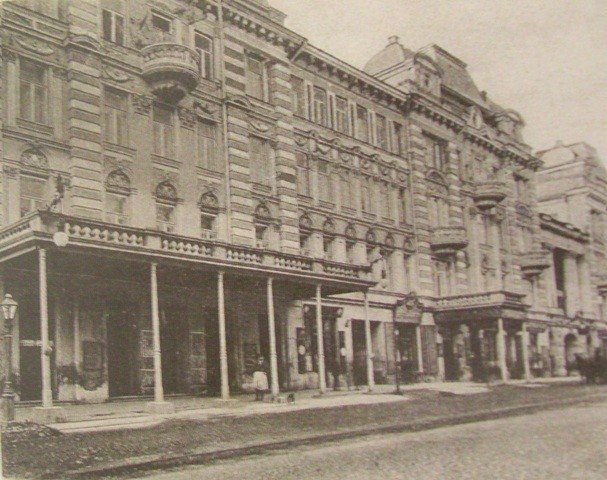Gediminas avenue is the main street of Vilnius city starting behind Žvērynas bridge and ending at Šventaragio st.
The street was formed in 1836. as St. Georgijaus (St. George) avenue. When Vilnius was occupied by Poland (1920-1939), this street was called Adam Mickiewicz Street (ulica Mickiewicza). in 1939 was called Gediminas Street.
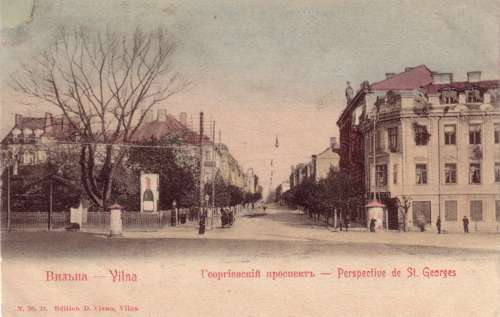

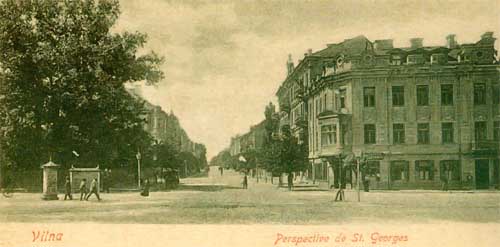
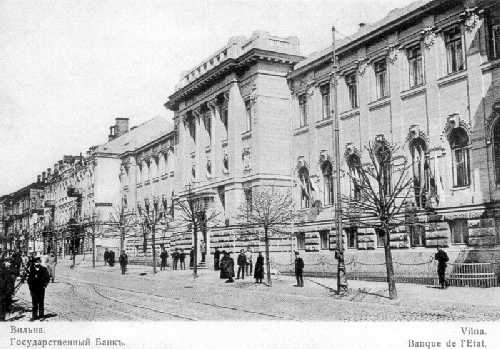
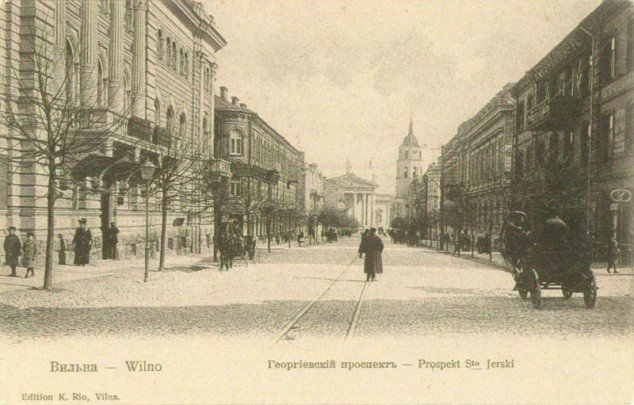
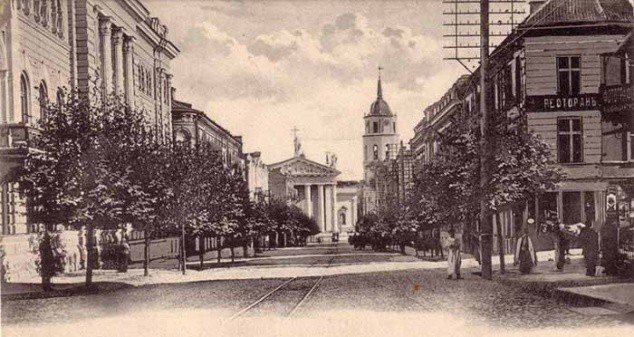
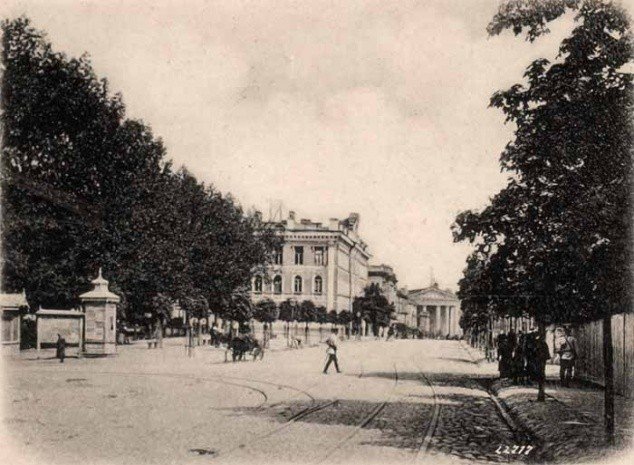
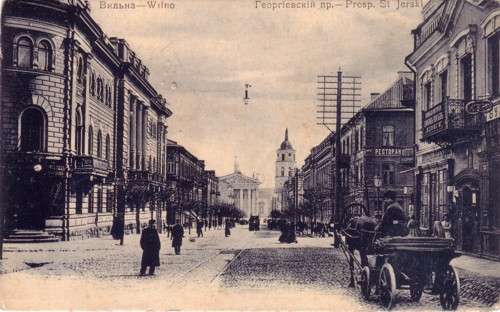
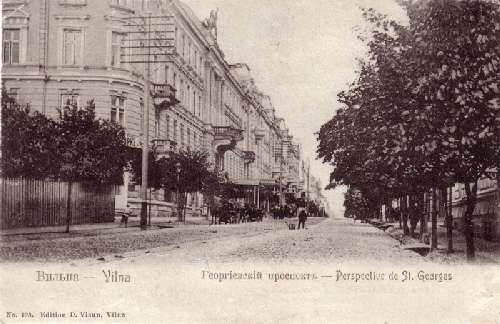
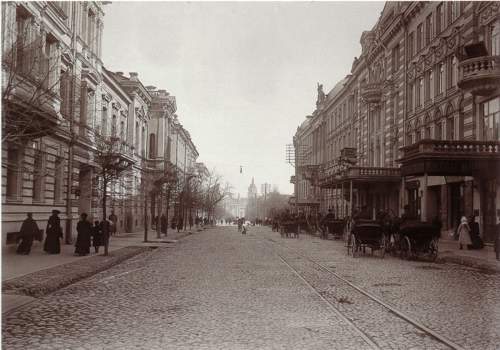
Gediminas Ave. 20/Jogailas str. 1 used to be the George (Георгия, Жорж) hotel. Architect Tadeushas Rostvorovskis designed and built a hotel on his plot in 1893-95.
St. was laid out above him. George's sculpture. One source mentions that the architect had trouble with this sculpture, because "the authorities saw in it similarities to St. George - the symbol of the city of Moscow" 🙂 The hotel had 35 living rooms.
After selling the built hotel to the landlord Ignatius Zavistovskis, the architect kept the representative apartments for himself.
Gediminas Ave. 22-24 the Great Theater operated for several years. In the house of Izaokas Smazhenevičius, built in 1899-1900. (In the "Compendium of Monuments" the construction period is indicated as 1899-1903, but this is probably an error) according to the project of the Russian-born architect Konstantin Koroyedov. The work was carried out by the construction technician Antanas Filipovičius-Dubovikas. At that time, it was perhaps the largest building in the city of Vilnius.
The two-part building is connected by a lower part with a gallery. In the connecting part there is an entrance to the inner courtyard. The parts of the facade on both sides of the main entrance are uneven: the eastern one is longer, symmetrical. The composition of both parts uses the same architectural elements; rusted blades divide them vertically into several parts, finished with decorative pediments. The middle and side axes of the parts are accentuated by semicircular balconies. The doors to the middle balconies are flanked by bas-reliefs of griffins. The street facade is richly decorated with order forms, a so-called French dome is raised on the roof.
Various clubs and shops rented premises in this building, arranged around three closed courtyards. in 1902 At the beginning of 35, the 1904-room hotel "Bristol" was opened by Kalmanas Radinas, a student of St. Petersburg University. The beautiful hall of the Great Theater, which was in the eastern part of the building, in XNUMX. destroyed fire. Later, another hall was built above the central entrance arch, which in 1909-1914 it was rented by the Lithuanian cultural society "Rūta", which organized concerts, lectures and theater performances. At that time, the house belonged to Aristarkh and Arseniy Pimonov. Originally, this hall, covered with a glass block vault, was used as a winter garden. The entrance to the theater was accentuated by a wide porch-balcony supported by metal columns.


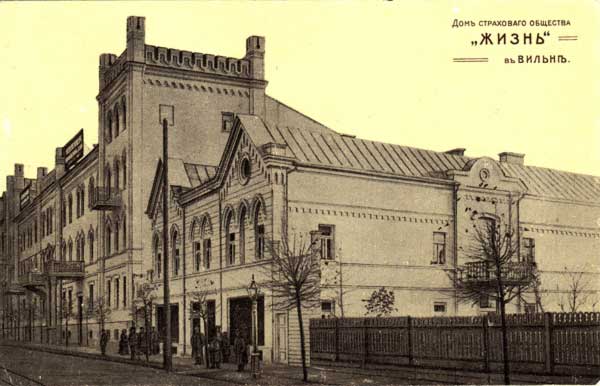
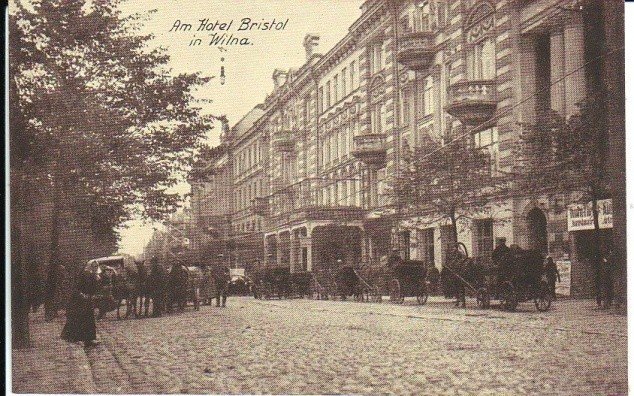

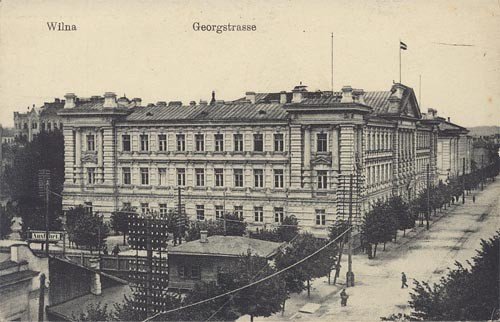
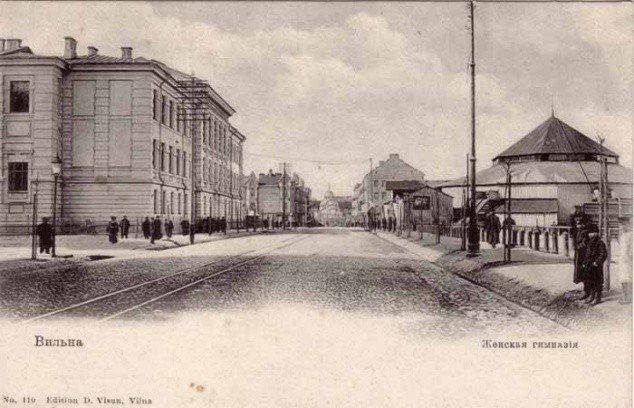
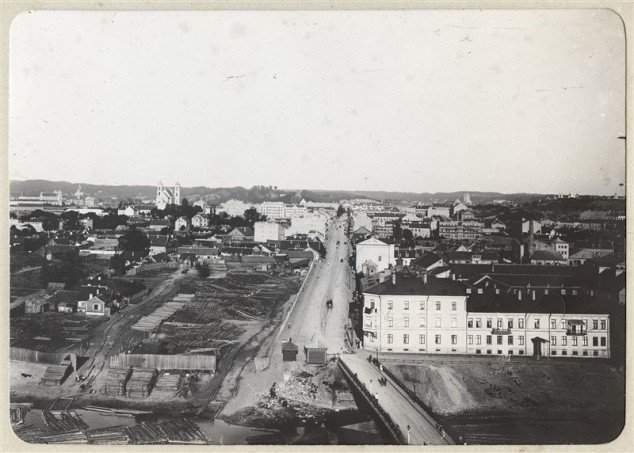
Source: VU GUIDE



